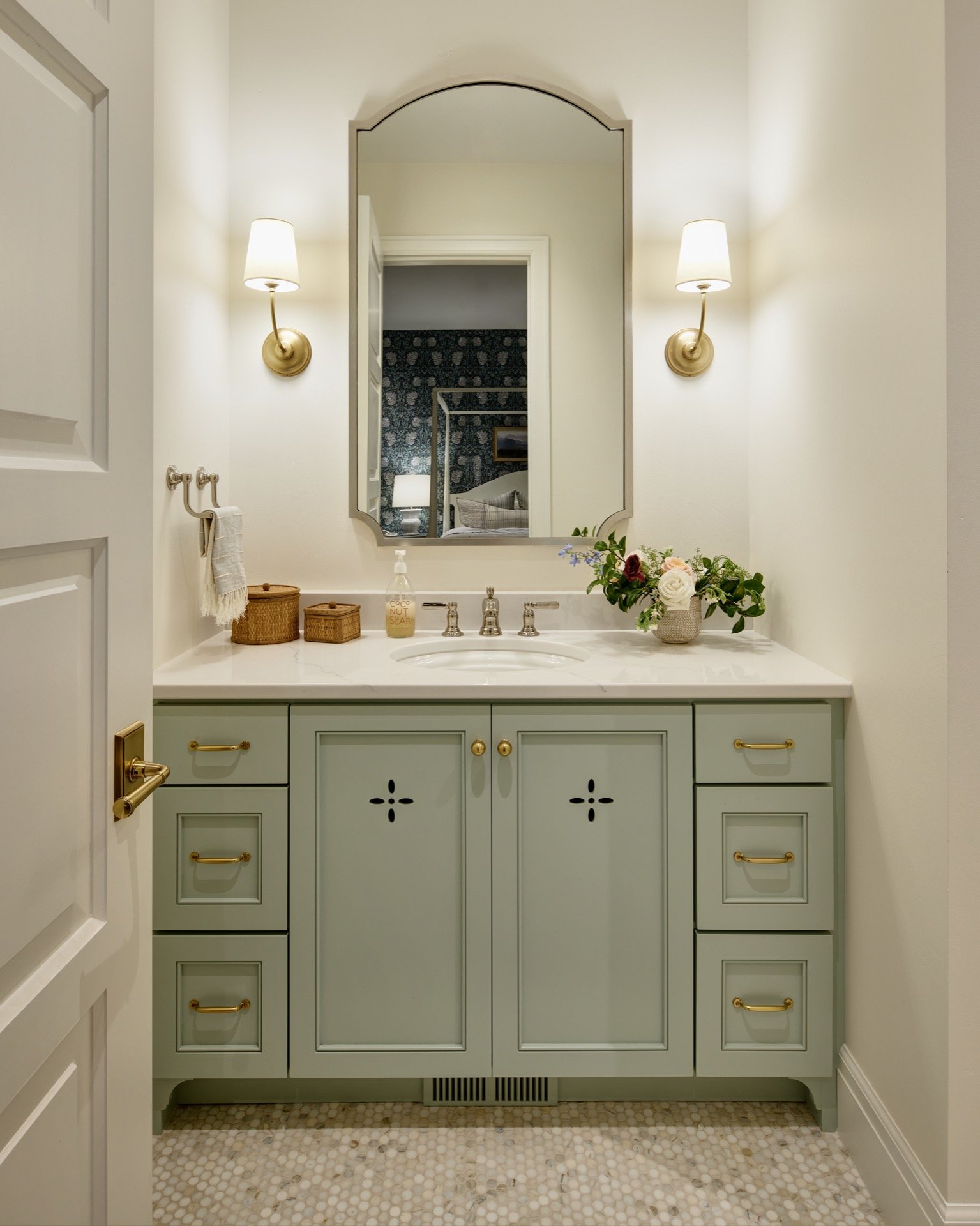Sizing + Scale Guide
In our video on 3 design mistakes that instantly throw off a space, we talked about this one key element: scale.
Even the most beautiful pieces can fall flat if they’re the wrong size. A rug that’s too small, art that’s hung too high, or lighting that’s out of proportion can make a space feel unfinished or awkward.
So here it is: our quick guide to getting the scale just right with rugs, art, and lighting. Because good design isn’t just about what you pick—it’s about how it fits.
Rugs
The #1 rug mistake? Choosing one that’s too small. Rugs should define a space and anchor your furniture—not float alone in a room.
Living Room
Minimum: Front legs of all furniture should sit on the rug.
Ideal: All furniture legs on the rug (especially in open spaces).
Sizing tips:
Use 9x12’ in smaller living rooms.
Go 12x15’ or larger for open layouts or large sectionals.
Leave at least 6–12” of exposed floor around the rug’s edge (not wall-to-wall).
Dining Room
Rug should extend 30” or more beyond all sides of the table so chairs stay on the rug when pulled out.
Common size: 8x10’ or 9x12’ for most dining areas.
Bedroom
King Bed: Use a 9x12’ to allow ~2 feet of rug showing on each side and foot. Nightstands do not sit on the rug.
Queen Bed: An 8x10’ works well. Same clearance applies.
Alternative: In small rooms, you can use a 6x9’.
Pro tip: Always consider the full room—not just the furniture. A rug should connect the space, not feel like an afterthought.
Art
Artwork brings personality, but only if it’s hung and sized correctly. Floaty, high, or too-small art instantly disrupts the room’s balance.
General Rules
Hang at eye level: Center of artwork should be 65” from the floor (gallery standard).
Above Furniture: The width of your artwork (or group of pieces) should be ⅔ to ¾ the width of the furniture below.
Spacing: Leave 2–3” between frames in a gallery wall. For oversized pieces of art, you can go up to 4”.
Common Areas
Over Sofa/Console: Use a single oversized piece or a pair/triptych. Make sure it’s large enough to anchor the furniture—it should not be narrower than half the sofa.
Gallery Wall Tip: Lay everything out on the floor first or use painter’s tape templates to test scale on the wall.
Pro tip: When in doubt, go bigger. Undersized art is the fastest way to make a wall look awkward.
Lighting
Lighting should feel tailored to the scale of the room and furniture below—not too high, too low, or too small.
Pendants Over Islands
Hang 32-38” above the countertop.
If using two pendants, they should be 30” inches apart and 6” or more from the edge of the island.
If your pendants are smaller than 15” in diameter, you will need three pendants.
Dining Room Chandeliers
Hang 30–36” above the table (measured from tabletop to bottom of fixture).
In larger rooms or with taller ceilings, hang slightly higher.
Sconces
For vanity mirrors: Mount at 60–65” from floor to center or eye level.
Pro tip: Lighting isn’t just functional—it’s sculptural. The right scale elevates the room even when the lights are off.
Want us to handle all the measurements (and the magic)? That’s what we’re here for. Inquire here for all the sizing and scale help you need.







